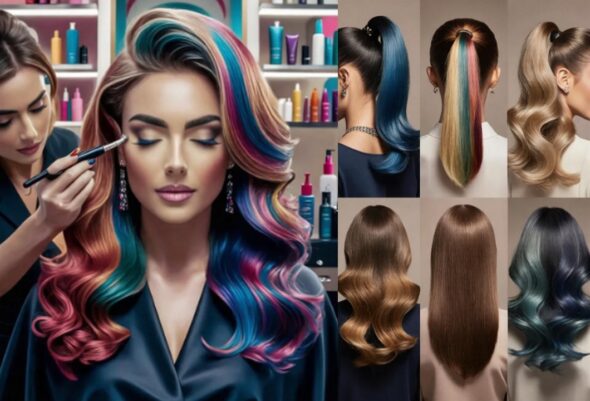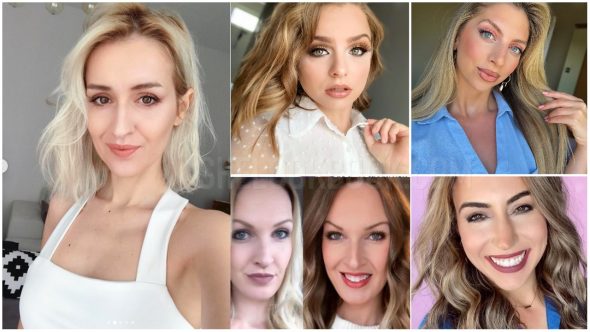Oily skin can also affect the scale and, therefore the hair. Result: greasy hair …
Oily skin should be treated on a case-by-case basis, depending on the cause and its importance. In general, it is advisable to avoid cosmetic products and oily ointments. In case of mild acne, it is often enough to clean the skin regularly.
In some cases, oily skin may be linked to disease (for example, Parkinson’s disease). The doctor must then treat this condition in a targeted manner, which can help alleviate this symptom of oily skin.
The causes
Young people are more likely to have oily skin, a phenomenon linked to acne. One of the causes is the increasing production of sebum due to hormonal changes during puberty.
Acne can begin around the age of 10 to 14, and decrease or disappear around the age of 20 to 25, which is also linked to variations in sebum production.
The causes of oily skin in women
In women, oily skin can be linked to hormonal variations, for example:
- Every month, before the start of your period,
- After stopping hormonal contraceptives (for example, birth control pills),
- During pregnancy,
- After childbirth.
Other causes of oily skin:
- malnutrition problems,
- excessive alcohol consumption,
- stress,
- humid and very hot weather,
- a hereditary predisposition,
- seborrheic dermatitis ,
- dysfunction of the autonomic nervous system,
- ovarian dysfunction,
- Parkinson’s disease…
Generally, a dermatologist only needs to examine the appearance of the skin to diagnose oily skin. This diagnosis already gives the first indications of the possible causes.
In a young person aged 10 to 18, oily skin accompanied by numerous pimples and concomitants suggests that it is a case of acne.
If the diagnosis is not clear, or if the doctor wants to exclude other diseases such as hormonal or metabolic disorders, he can carry out additional tests:
- A blood test,
- An ultrasound of the ovaries,
- A scanner,
- An MRI (magnetic resonance imaging).
- In pictures: 21 tips for having beautiful skin
Treatments
Treatment for oily skin depends on the cause and severity of this symptom. In all cases, oily ointments and cosmetic products should be avoided.
To benefit from the best treatment, it is best to consult a specialist doctor: a dermatologist.
Acne treatments
In cases of mild acne, it is often sufficient to clean and care for the skin regularly using cleansing water free of surfactants.
If acne is more pronounced, treatments prescribed by the doctor, with active ingredients like benzoyl peroxide, or antibiotics may be an option.
In women, the gynecologist can prescribe estrogen-based treatment in cases of severe acne .
There are also even more powerful medications (such as isotetrinoin) against acne, but which require extreme precautions for use.
Read: Best Japanese Face Mask – How To Use For Shining White
Other treatments
As stress is a cause of oily skin, relaxation techniques can also help relieve the symptoms alongside basic treatment.
Another remedy: regular steam baths for the face (for example, with chamomile), can help prevent the formation of pimples.
In the case of seborrheic dermatitis, the treatment prescribed by the dermatologist is mainly through the implementation of local care.
If oily skin is a secondary symptom of another disease (for example, Parkinson’s disease), specific treatments for that disease are necessary.
Oily skin: Best tips we wish we knew sooner!
The face that shines in photos, desire to “purify” your skin in the evening, pores that are too visible, small blackheads… oily skin sometimes see all the colors! And yet, like each skin type, they also have their advantages, such as aging well, without marking too much! Here are some tips to better understand your oily skin and know how to limit shine and imperfections. Cleansers that are too aggressive, mattifying treatments that don’t hydrate enough: you’ll know all about the pitfalls to avoid!
How do I know if I have oily skin?
Here are some indicators to spot oily skin:
- It tends to shine, especially in summer, but sometimes even in winter. Shines concentrate on the T zone
- It is extremely rare that she pulls
- Your pores are visible to the naked eye , a bit like dilated
- The skin has a few blackheads and sometimes imperfections on this same T zone
- Your makeup doesn’t last all day
- Your hair tends to get greasy quickly after shampooing
If these clues speak to you, you probably have oily skin, but it is important to differentiate your skin type from your skin condition.
Your skin type is a genetic characteristic that remains stable (except after major hormonal changes such as puberty or pregnancy). There are 3 main types of skin: oily, combination or dry – depending on the amount of sebum your skin produces.
Your skin condition may vary. It is linked to the hydration level of your skin. If you have oily skin, you can still have dehydrated skin, for example in the summer.
“The sebaceous glands produce excess sebum, which leads to a shiny effect and imperfections”
Here is a test to better determine your skin typology (type + condition)
Blue result: You have oily, well-hydrated skin. It produces a lot of sebum, which can cause shine, visible pores, imperfections. Advantage: these are skins that wrinkle less quickly!
Orange result: You have dry, reactive skin (A1 and B1) or dehydrated skin (A2 and B2). As it produces little sebum, its weakened hydrolipidic film does not retain the water supplied to it well. It dehydrates more quickly with temperature variations.
Yellow result: You have normal to dry skin, but are rather hydrated. It doesn’t produce a lot of sebum. If you have acne, it may be more hormonal acne.
Green result: You have normal to oily and rather dehydrated skin: combination skin! It overproduces sebum where the sebaceous glands are most present (T zone), but it is also dehydrated in some places (cheeks).
Do you see more clearly? Come on, if you have oily skin, just read a little more…
What does it mean to have oily skin?
Oily skin is skin that will produce more sebum than dry skin. Sebum is essential for the proper functioning of the skin: it maintains the hydrolipid film, protects the skin and gives it suppleness and comfort. It also retains hydration.
But, in the case of oily skin, the sebaceous glands produce excess sebum, which gives a shiny effect to the skin, “clogs” the pores and creates blackheads and/or imperfections. As these glands are more concentrated in the T zone, it is an area that tends to shine more than the rest of the face!
What causes my oily skin?
- First, genetics! Thank you, Mom and Dad, but not only…
- Hormonal imbalances, particularly during adolescence (80% of adolescents present with hyper-seborrhea), pregnancy or under certain pills
- The use of unsuitable cosmetics, particularly harsh
- Hypersensitivity of the sebaceous glands to androgens
- Environmental factors such as heat, humidity, stress, and. Sebum production also varies throughout the day: it is strongest between noon and 2 p.m. and weakest between 4 and 7 a.m.
What is my routine for my oily skin?
Cleanse your skin every day with extra gentle facial cleansers
The most common mistake is wanting to strip your oily skin with a very drying cleanser: You then traumatize the skin, which will, in return, overproduce sebum. Not at all the expected goal! To do this, we avoid drying products that contain alcohol in particular (notably micellar waters, lotions, and purifying foams) and soaps whose pH is too high, for example, Marseille soap. We favor the textures of balms, jellies ( Krème fresh cleansing jelly ), oils or dermatological bars
I go through the exfoliating process twice a week
Choose an extra fine scrub to avoid micro-lesions or a grain-free peel (but be careful to choose suitable acids). Consider applying a moisturizer after exfoliation to keep your skin healthy.
I occasionally absorb with a clay mask
Clay is recognized for its purifying, cleansing, and absorbent properties.
2 tips: never let the clay dry (moisten it throughout the application), and favor white and pink clays, which are softer (even if green clay is often recommended for oily skin, the softer the better). We do not recommend that you follow exfoliation with a clay mask, it is too much at once. Alternate: 1 clay mask once a week and 2 exfoliations max per week. There is no specific brand to recommend, a Cattier does the job very well!
I moisturize with a light, non-comedogenic cream, which moisturizes without suffocating the skin
On this, we’re going to be a little chauvinistic: Krème’s Vitamin Moisturizing Cream is adored by oily skin because it quenches the skin while leaving a velvety finish that leaves no room for shine… All this while being non-comedogenic, 100 % natural, certified organic, and without allergens or preservatives. It helps to rebalance the skin thanks to the presence of probiotics.
Every other evening, I can replace my cream with a very light oil, such as hemp or hazelnut, which will help the skin regulate its sebum production by sending it a nutrition signal.
I adapt my makeup habits!
This is undoubtedly something that oily skin needs to adapt to the most because makeup can be both their best friend and their worst enemy. Best friend, because, when chosen correctly, it helps to blur shine. Worst enemy because, if poorly chosen, it clogs pores and accelerates the formation of blackheads by preventing the skin from breathing.
We avoid fluid or compact foundations loaded with silicone (we recognize them in the list because they often start with cyclo). Also, be careful with so-called “blurring” care products because they too are concentrated in silicones, which are not the allies of oily skin.
We favor:
- If you can’t do without uniform coverage, opt for light, refined foundations with non-silicone compositions.
- If you can do without it, it is possible to hide only small imperfections with a localized concealer
- It is then possible to even out the complexion and ensure a matte effect all day long with a mattifying powder (loose or compact)
- Also think about clean blushes which can enhance the complexion while avoiding the foundation box!
Here are 5 dyed products that we recommend for oily skin 👇
- ILIA, Skin tint: the complexion serum that lets the skin breathe. A fluid “second skin” texture with light coverage, with SPF30.
- VICHY, Dermablend Corrector: the stick that brings together pharmacist and make-up artists. A creamy but non-greasy texture that camouflages imperfections. High coverage, 100% mineral pigments, hypoallergenic.
- ESTAMPE, Mattifying powder: the anti-shine weapon. A natural texture with a transparent finish to unify and mattify. Apply it with a large brush in the morning and for touch-ups. It also fixes makeup and slips into a refillable cork case.
Finally, undoubtedly, the point that we hammer home the most in the articles on the Krème blog is: avoid the sun. This is the constant. In the short term, it dries up spots, but it only delays the return of imperfections, which reappear once the skin becomes refined after a phase of exposure. Always aim for SPF 30 or 50.
Remember: cosmetics are just one lever among others. Diet is key to not overproducing sebum. In particular, we will limit saturated fats (fried foods, saturated fats), sugars (sodas, pastries, pastries), alcohol, and and dairy products. Drink plenty of water because, if you have learned your lesson, the goal is never to dehydrate it, even when you have oily skin!
Fans Page / She Look Book



Everything is very open with a precise clarification of the issues.
It was really informative. Your website is extremely helpful. Many thanks for sharing!